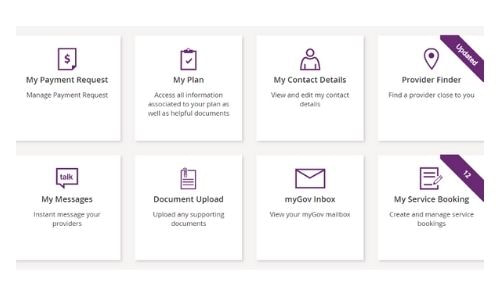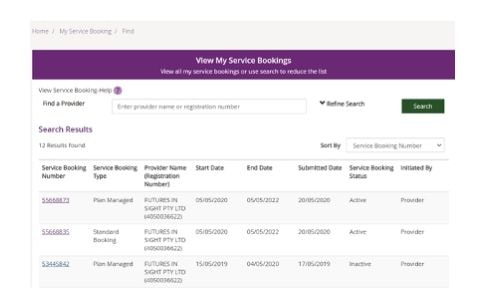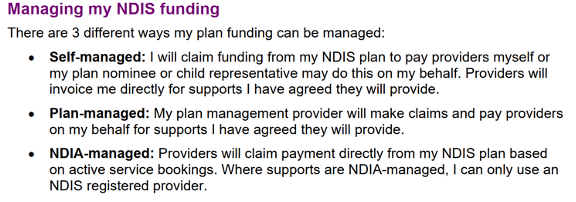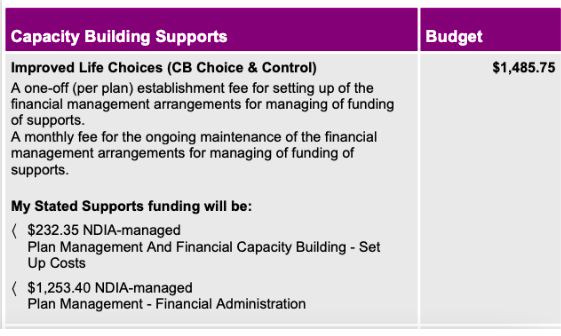Know more about Plan management
The topics below are from our monthly Plan Management Update. They are written to help us all understand the ins and outs of plan management better and helps all of us to stay on top. If you want to subscribe to the monthly Plan Management Update... please click here.
Now we all know that service agreements are not needed to get a service (except when you live in Specialist Disability Accommodation and if you want your services to be GST free ), but our recommendation is that it is useful for you and the provider to have an agreement in place (maybe not for a one-off service but definitely if the service is ongoing) and they are legally binding.
The NDIS says the things to look out for when making an agreement include:
Also, all the usual Australian Consumer protection laws apply and ACCC (Australian Competion and Consumer Commission) produced a lot of information specifically for consumers who use businesses selling and supplying people with disability. (
If you use futures in sight services, you would have seen and signed the agreement we use. We try to write it in not too complicated English (but it's not yet ‘easy read’- we should really do that) and it is not too long, and it tries to cover the important parts identified by the NDIS and not more.
From what we learned over the last few years:
1. If you have a service agreement, please read it AND understand it. Don’t sign anything you do not understand.
We have seen service agreements that were pages and pages long, clearly written by a lawyer. You don’t need to engage your own lawyer to interpret the agreement. Especially, if you use an NDIS registered provider, you have the right to have the information presented in a way so you understand it. Ask questions.
Our favourite is when we asked questions about what was written in a service agreement and the service manager or someone else in the service says, “Oh, I don’t understand that either. I will have to ask HR!”
Tip No 1: Don’t sign if you don’t understand it!
2. A service agreement is an agreement. It’s a negotiation between two parties (that’s one of the big differences between a contract and an agreement).
Theoretically, everything is negotiable. As Coordinators of Support, together with people we have negotiated rates of service, penalties, payments for transport/ travel, notice periods for ending or changing the agreement, what happens when staff are ill/on leave, the length of the agreement and more.
Of course, when there is plenty of work and not enough people doing the work, negotiating is harder. So as many of you know, it’s been harder to negotiate.
We also noticed that there are providers who won’t even put you on the waiting list without having a signed agreement, let alone give you a taster with a support worker or the allocated therapist. It’s a bit like “buy before you try”, when it should really be the other way round.
Tip No.2: Negotiate
The NDIS says the things to look out for when making an agreement include:
- what supports are being provided
- the cost of the supports
- responsibilities of your provider
- your responsibilities
- how long the agreement goes for and how it can be changed
- dispute resolution process.
Also, all the usual Australian Consumer protection laws apply and ACCC (Australian Competion and Consumer Commission) produced a lot of information specifically for consumers who use businesses selling and supplying people with disability. (
If you use futures in sight services, you would have seen and signed the agreement we use. We try to write it in not too complicated English (but it's not yet ‘easy read’- we should really do that) and it is not too long, and it tries to cover the important parts identified by the NDIS and not more.
From what we learned over the last few years:
1. If you have a service agreement, please read it AND understand it. Don’t sign anything you do not understand.
We have seen service agreements that were pages and pages long, clearly written by a lawyer. You don’t need to engage your own lawyer to interpret the agreement. Especially, if you use an NDIS registered provider, you have the right to have the information presented in a way so you understand it. Ask questions.
Our favourite is when we asked questions about what was written in a service agreement and the service manager or someone else in the service says, “Oh, I don’t understand that either. I will have to ask HR!”
Tip No 1: Don’t sign if you don’t understand it!
2. A service agreement is an agreement. It’s a negotiation between two parties (that’s one of the big differences between a contract and an agreement).
Theoretically, everything is negotiable. As Coordinators of Support, together with people we have negotiated rates of service, penalties, payments for transport/ travel, notice periods for ending or changing the agreement, what happens when staff are ill/on leave, the length of the agreement and more.
Of course, when there is plenty of work and not enough people doing the work, negotiating is harder. So as many of you know, it’s been harder to negotiate.
We also noticed that there are providers who won’t even put you on the waiting list without having a signed agreement, let alone give you a taster with a support worker or the allocated therapist. It’s a bit like “buy before you try”, when it should really be the other way round.
Tip No.2: Negotiate
Thanks to NDIS, we now have to get our heads around terms that didn’t exist before like service bookings. It always surprises me how quickly new lingos take off, and if you don’t speak it, you feel like that kid sitting on the sidelines watching others having fun.
As a plan manager, my life revolves around service bookings, yet I found it hard to explain it to my partner! So, let’s see how I go here. People who don’t need to worry about service bookings are those who self-manage because you do your own claiming and paying. For anyone else with funds that are either plan-managed or NDIA-managed, making a service booking is essential. Otherwise, no money can be claimed from your plan.
People who can make service bookings are registered providers including plan managers. They do that in their NDIS portal and that allows them to claim funds to pay for their services or pay other providers if they’re your plan manager. They must have your approval before making a booking and that can be by signing a service agreement that sets out the start and end date of the booking, which NDIS category to book from and for how much. When you allow someone to make a booking, you’re handing over your funding so it’s important that you monitor the bookings and how much has been claimed from those bookings.
As a plan manager, my life revolves around service bookings, yet I found it hard to explain it to my partner! So, let’s see how I go here. People who don’t need to worry about service bookings are those who self-manage because you do your own claiming and paying. For anyone else with funds that are either plan-managed or NDIA-managed, making a service booking is essential. Otherwise, no money can be claimed from your plan.
People who can make service bookings are registered providers including plan managers. They do that in their NDIS portal and that allows them to claim funds to pay for their services or pay other providers if they’re your plan manager. They must have your approval before making a booking and that can be by signing a service agreement that sets out the start and end date of the booking, which NDIS category to book from and for how much. When you allow someone to make a booking, you’re handing over your funding so it’s important that you monitor the bookings and how much has been claimed from those bookings.
The important bits to notice are:
So next time you receive the budget reports from us, go into your portal and check the figures against the remaining amounts in the plan managed bookings. They should roughly match (remember, our system is slightly behind).
If you have funds that are NDIA-managed and you’re planning to use different providers for various things, monitoring service bookings in your portal is a good way to ensure that no provider books more than they should or claims without your approval.
- the start and end dates of the booking as any support you received during this time period can be claimed from this booking.
- allocated amount which is the starting amount before any claims have been made
- remaining amount which is how much is left in each of the NDIS categories.
So next time you receive the budget reports from us, go into your portal and check the figures against the remaining amounts in the plan managed bookings. They should roughly match (remember, our system is slightly behind).
If you have funds that are NDIA-managed and you’re planning to use different providers for various things, monitoring service bookings in your portal is a good way to ensure that no provider books more than they should or claims without your approval.
But there’s always more to the story and here’s a bit of a lowdown:
Out of the three, NDIA-managed, sometimes called Agency-managed, is the most restrictive way of having your funding managed. You can only use registered providers. They make a service booking in the provider portal based on the support you want them to provide and the amount of funding you’re happy for them to charge. The advantage of having your plan Agency-managed is that you don’t have to do any claiming and paying. The providers get paid by claiming through the provider portal after a service is delivered. Make sure you get to approve the charges before they make a claim. It’s also a good idea to monitor the service bookings and providers claims in your participant portal to avoid any nasty surprises.
Plan-managed also has the advantage of not doing the claiming and paying of providers yourself. A plan management service provider does all that for you. Again, make sure you approve the invoices before they claim money from your plan. You should also get regular reports from your Plan Manager about your spending. Plan Management also give you the flexibility of using both registered and unregistered providers, so you have a lot more choices.
Self-managed is the most flexible way of managing your funding. You can use both registered and unregistered providers. Also, what you pay is negotiated between you and your provider and is not limited by the NDIS price guide. Supports paid under Plan Management and Agency Management are subject to the maximum rates stated in the price guide.
How you like your funding managed depends on your choice. You can choose to go with one way or have all three in the same plan, or even in the same category!
For example, you can have a mix of Plan Management and Self-Management of your Core support as you learn about self-managing your plan.
So, the next time when you have your plan review, have a think about how you want your plan managed and ask for what works best for you.
Out of the three, NDIA-managed, sometimes called Agency-managed, is the most restrictive way of having your funding managed. You can only use registered providers. They make a service booking in the provider portal based on the support you want them to provide and the amount of funding you’re happy for them to charge. The advantage of having your plan Agency-managed is that you don’t have to do any claiming and paying. The providers get paid by claiming through the provider portal after a service is delivered. Make sure you get to approve the charges before they make a claim. It’s also a good idea to monitor the service bookings and providers claims in your participant portal to avoid any nasty surprises.
Plan-managed also has the advantage of not doing the claiming and paying of providers yourself. A plan management service provider does all that for you. Again, make sure you approve the invoices before they claim money from your plan. You should also get regular reports from your Plan Manager about your spending. Plan Management also give you the flexibility of using both registered and unregistered providers, so you have a lot more choices.
Self-managed is the most flexible way of managing your funding. You can use both registered and unregistered providers. Also, what you pay is negotiated between you and your provider and is not limited by the NDIS price guide. Supports paid under Plan Management and Agency Management are subject to the maximum rates stated in the price guide.
How you like your funding managed depends on your choice. You can choose to go with one way or have all three in the same plan, or even in the same category!
For example, you can have a mix of Plan Management and Self-Management of your Core support as you learn about self-managing your plan.
So, the next time when you have your plan review, have a think about how you want your plan managed and ask for what works best for you.
If you have a look in your NDIS Plan at your funding bit, you might find something called Stated Supports. Basically, this means your funding can only be used for the item that is stated- you can’t spent it on anything else. Most Stated Supports can be either plan or agency managed.
The most common example of this is the plan management fees - in your budget they most likely look like this:
The most common example of this is the plan management fees - in your budget they most likely look like this:
In addition, there are some specific items that can only be funded it they are identified as Stated Supports. To get those items into your plan you need to provide a quote to the NDIA (preferably at your plan review meeting. These include:
Please note that you do NOT have to follow this. These are suggestions only (hopefully based on what you and the planner talked about), but you have choice and control and can make changes to this as you need. It’s only when it’s a Stated Support that you do not have any choice.
- Assistance with the cost of the preparation and delivery of meals
- Assistance from Live- in carer
- Linen Service
- Specialised Driver Training
- On call overnight monitoring
- ILO (Independent Living Options) - Support model.
Please note that you do NOT have to follow this. These are suggestions only (hopefully based on what you and the planner talked about), but you have choice and control and can make changes to this as you need. It’s only when it’s a Stated Support that you do not have any choice.












